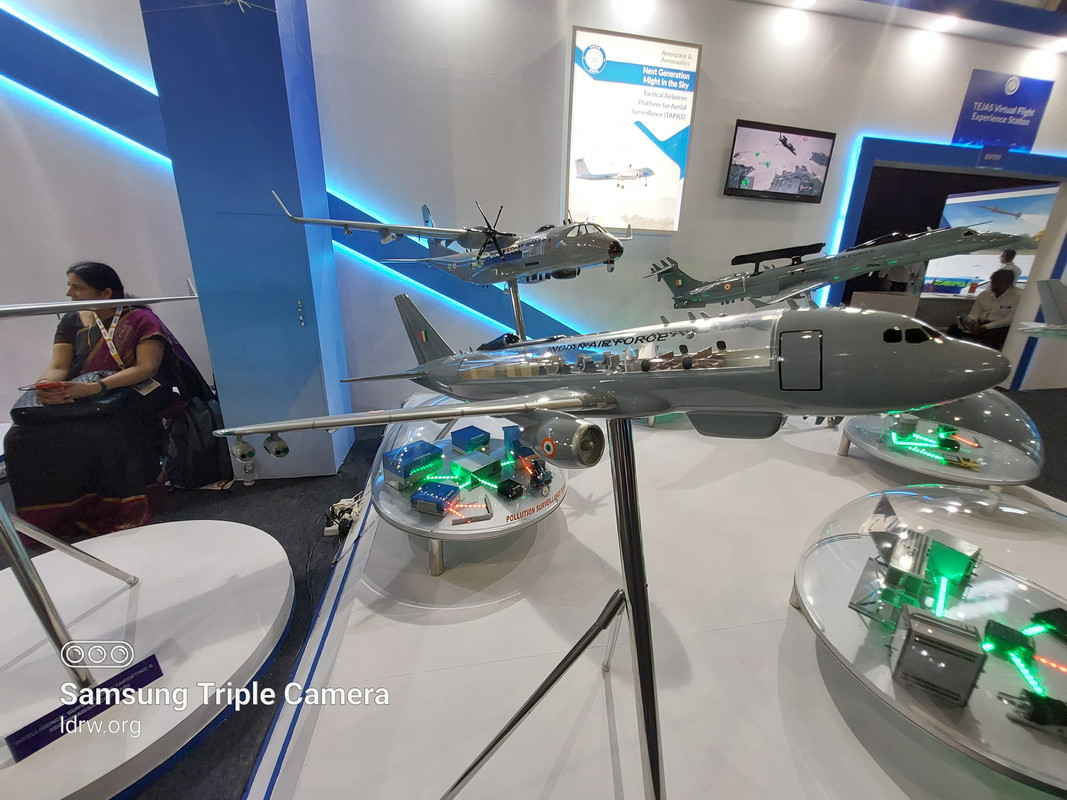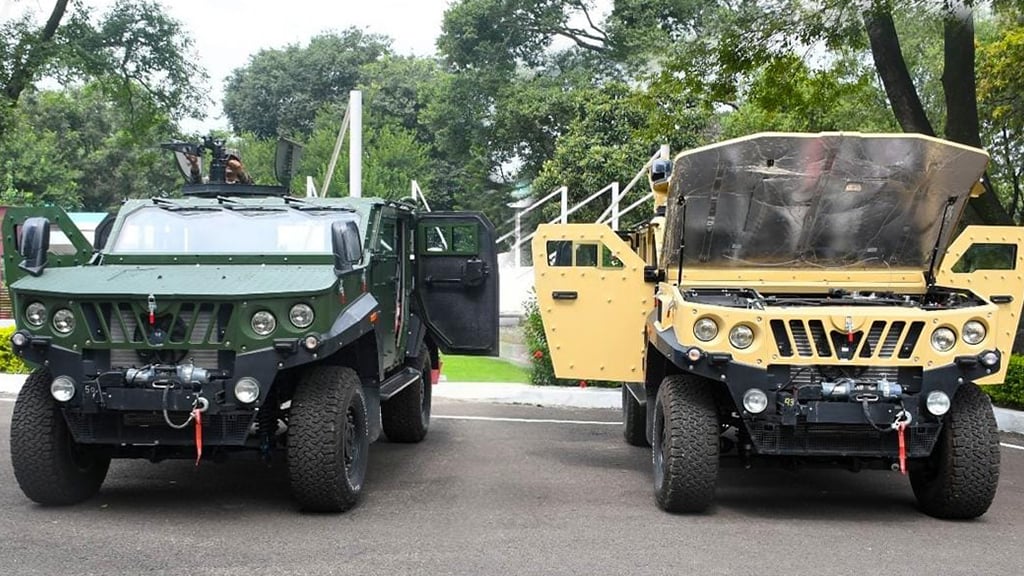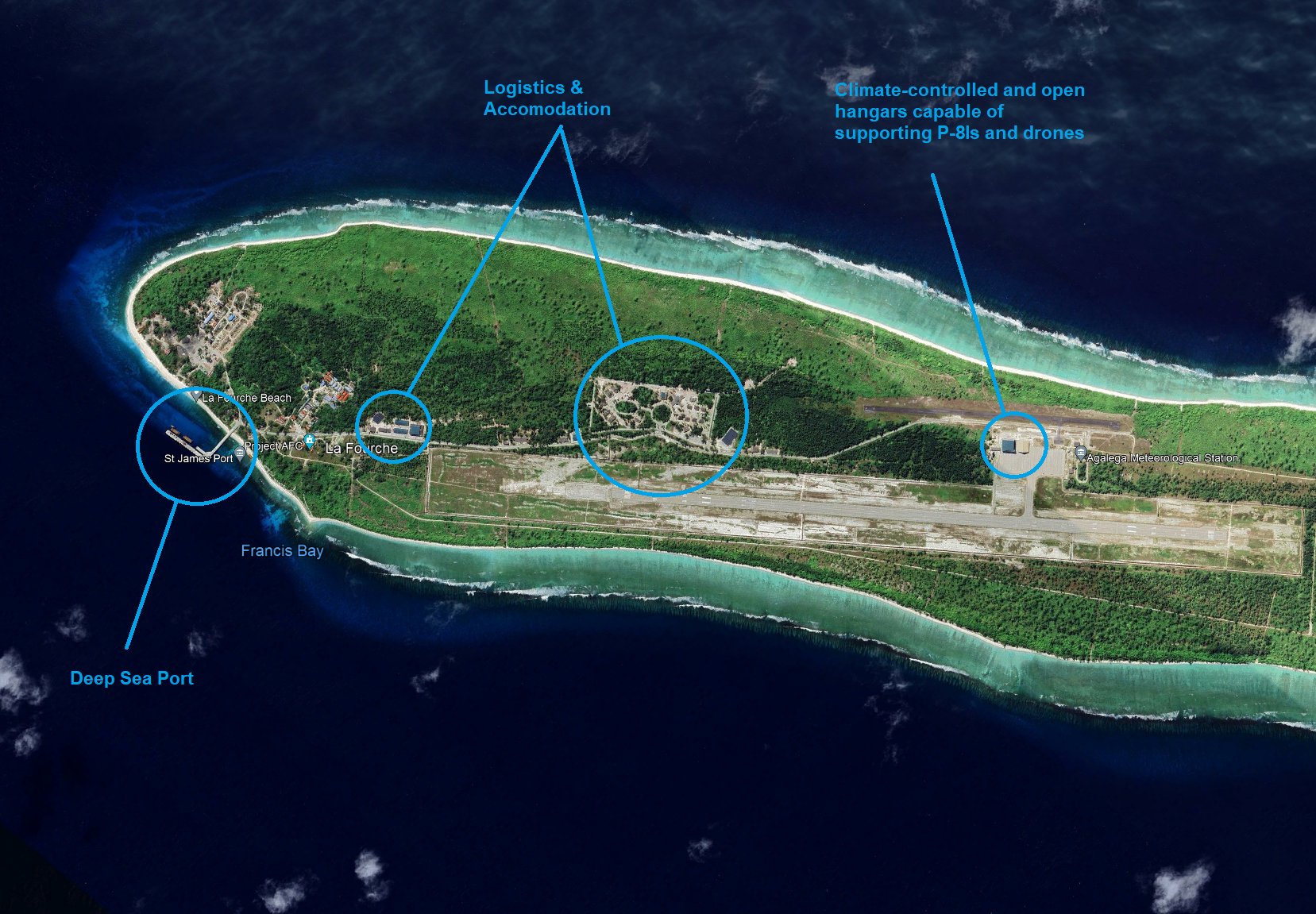SOURCE: AFI


In a significant move to strengthen its defence manufacturing capabilities, Apollo Defence Industries Private Limited (ADIPL), a wholly owned subsidiary of Hyderabad-based Apollo Micro Systems Limited (AMS), has signed a Share Purchase Agreement (SPA) on May 2, 2025, to acquire 100% equity of IDL Explosives Limited for ?107 crore in an all-cash transaction.
IDL Explosives, a subsidiary of GOCL Corporation under the Hinduja Group—one of the largest diversified transnational conglomerates with a presence in over 100 countries—is a leading manufacturer of packaged and bulk explosives for mining and infrastructure projects. The acquisition, expected to close within two to three months pending regulatory approvals, marks a strategic leap for Apollo Micro Systems as it expands into defence explosives, aligning with India’s push for self-reliance in defence production. This article explores the details of the deal, the significance of IDL Explosives, and its implications for India’s defence and industrial sectors.
Continue readingSOURCE: RAUNAK KUNDE / NEWS BEAT / IDRW.ORG


Hindustan Aeronautics Limited (HAL)’s 2-ton CATS Warrior loyal wingman, currently under development, is poised to revolutionize the Indian Air Force’s (IAF) operational strategy by integrating advanced weaponry and cutting-edge avionics.
Designed to operate alongside manned fighter jets like the HAL Tejas, the CATS Warrior is evolving into a versatile platform capable of carrying not only the Advanced Short-Range Air-to-Air Missile (ASRAAM) but also the indigenous Astra Mk1 Beyond Visual Range Air-to-Air Missile (BVRAAM). With an enhanced payload capacity and sophisticated guidance options, this unmanned combat aerial vehicle (UCAV) promises to extend the IAF’s reach and lethality while keeping pilots out of harm’s way.
Continue readingSOURCE: RAUNAK KUNDE / NEWS BEAT / IDRW.ORG


As part of its strategic roadmap to bolster capabilities along its volatile borders with China and Pakistan, the Indian Air Force (IAF) has outlined its key acquisition priorities for the financial year 2025-26.
Among these is the procurement of three advanced Signal Intelligence (SIGINT) and Communication Jamming (COMJAM) aircraft, a move aimed at enhancing the IAF’s electronic warfare (EW) and intelligence-gathering prowess. Signals and Communications Aircraft (SCA), a long-endurance, multi-mission platform will be based on the pre-owned Airbus A321 airframe. This aircraft promises to deliver cutting-edge passive intelligence collection and signal jamming capabilities, reinforcing India’s aerial dominance in contested regions.
Continue readingSOURCE: RAUNAK KUNDE / NEWS BEAT / IDRW.ORG


In a significant development for India’s defense procurement strategy, the Indian Army has recommended that the Ministry of Defence (MoD) abandon plans to procure Stryker Armored Personnel Carriers (APCs) from the United States, following disappointing trial results. Instead, the Army is throwing its weight behind an improved indigenous variant of the Wheeled Armoured Platform (WhAP) 8×8, known as the Advanced Armoured Platform (AAP) Wheeled, developed collaboratively by the Defence Research and Development Organisation (DRDO) and private sector partners.
The Stryker, an 8×8 wheeled infantry fighting vehicle manufactured by General Dynamics Land Systems, was initially considered for induction into the Indian Army through a government-to-government (G2G) deal with the United States. However, trials conducted in high-altitude terrains, such as those in Ladakh, revealed significant shortcomings. Powered by a Caterpillar C7 360 hp engine, the Stryker struggled with underperformance in mountainous regions, a critical operational requirement for India given its border disputes with Pakistan and China. Reports from February 2025 highlighted the vehicle’s inability to meet the Army’s expectations, with sources noting its logistical simplicity—designed for U.S. expeditionary warfare—did not translate well to India’s diverse and rugged combat environments.
Continue readingSOURCE: AFI
)

India’s indigenous aircraft carrier, INS Vikrant, designed to operate MiG-29K and LCA Navy aircraft, is now eyeing the integration of the advanced Rafale-M fighter jet. However, to ensure compatibility with the carrier’s compact infrastructure, both the Rafale-M and the flight deck require specific modifications. These adjustments are critical to accommodate the jet on Vikrant’s elevators and optimize its performance on the ski-jump-equipped carrier.
INS Vikrant’s elevators, designed for the smaller dimensions of MiG-29K and LCA Navy aircraft, pose a challenge for the Rafale-M. The French jet, with its larger wingspan and distinct configuration, requires modifications to fit on the carrier’s compact lifts. “The lifts would need some modifications for the Rafale-M to fit in,” a defense source confirmed. These elevators are vital for transferring aircraft and equipment between the hangar below and the flight deck above, making their compatibility with Rafale-M a priority.
Continue readingSOURCE: AFI


Pakistan’s Defense Minister Khawaja Asif claimed that Pakistan Air Force (PAF) J-10CE fighter jets, possibly equipped with the KG600 jamming pod, successfully disrupted the radar and communication systems of four Indian Air Force (IAF) Rafale jets patrolling near the Line of Control (LoC) in Kashmir. The assertion, which suggested that the Chinese-made J-10CE overwhelmed the Rafale’s advanced Thales RBE2 Active Electronically Scanned Array (AESA) radar, sparked widespread skepticism and ridicule on social media and among defense analysts.
Critics pointed to the technological superiority of the Rafale’s SPECTRA electronic warfare (EW) suite and dismissed Pakistan’s claims as exaggerated propaganda, highlighting the limitations of the KG600 jammer and Chinese EW technology.
Continue readingSOURCE: AFI


Amid escalating tensions with India following the April 22, 2025, Pahalgam terrorist attack that killed 26 civilians, the Pakistan Navy has reportedly requested the deployment of 12 Pakistan Air Force (PAF) F-16 Block 52 fighter jets to defend its ports and warships against potential attacks from the Indian Navy’s MiG-29K carrier-based fighters.
This request, reported by defense sources close to AFI, comes as India deploys its aircraft carriers, INS Vikrant and INS Vikramaditya, in the Arabian Sea, signaling robust maritime power projection. However, the F-16 Block 52, primarily a land-based multirole fighter, lacks configuration and expertise for anti-ship missions over open waters, raising questions about the Pakistan Navy’s strategy. This article analyzes the rationale, feasibility, and implications of this deployment, situating it within the broader context of India-Pakistan naval and air dynamics.
Continue readingSOURCE: AFI


India’s pursuit of self-reliance in aerospace through the Advanced Medium Combat Aircraft (AMCA) program—a 5.5-generation stealth fighter—has reached a critical juncture. With global powers like the United States, China, and Europe advancing sixth-generation fighter technologies, India faces the challenge of keeping pace while addressing regional threats from China’s J-20 and emerging platforms.
A potential collaboration with the UK-led Tempest program, part of the Global Combat Air Programme (GCAP) involving Japan and Italy, could provide a transformative boost to India’s AMCA program. By securing access to Tempest’s advanced engine technologies with local production rights, India could not only enhance the AMCA but also lay the foundation for sixth- and seventh-generation fighter jets through 2060.
Continue readingSOURCE: IDRW.ORG


As the Indian Air Force (IAF) grapples with a critical shortfall in fighter squadrons and evaluates options for its Multi-Role Fighter Aircraft (MRFA) tender, Russia’s Sukhoi Su-57 stealth fighter is emerging as a compelling contender. Recent developments in Russia’s production capacity and engine technology, coupled with a robust offer for co-production in India, position the Su-57E as a viable interim solution to bridge the gap until India’s indigenous Advanced Medium Combat Aircraft (AMCA) enters service in the mid-2030s.
However, challenges related to engine readiness, payment mechanisms, and potential sanctions under the US’s Countering America’s Adversaries Through Sanctions Act (CAATSA) could complicate this opportunity, raising questions about the Su-57’s fit for India’s fifth-generation fighter requirements.
Continue readingSOURCE: IDRW.ORG


Ministry of Defence (MoD), Government of India, issued a Request for Information (RFI) to procure a significant number of Light Specialist Vehicles (LSVs) for the Indian Armed Forces, particularly the Indian Army.
The RFI, aimed at both domestic and international Original Equipment Manufacturers (OEMs) and vendors, outlines the Indian Army’s need for LSVs to support deployment along Northern Borders, particularly in high-altitude areas like Ladakh, where tensions with both Pakistan and China remain high. The document is structured in three parts: operational and technical requirements, vendor selection criteria, and response methodology.
Continue readingSOURCE: AFI


In a bold move to assert its dominance in the Indian Ocean Region (IOR), India has established a pivotal military base on the remote Agalega Island, part of Mauritius, located near one of the world’s busiest maritime waterways—the Mozambique Channel. Inaugurated in February 2024, this base, equipped with a 3,000-meter airstrip and a deep-water jetty, is designed to host large military aircraft like the Boeing P-8I Poseidon and naval warships, transforming Agalega into a launchpad for operations across the farthest reaches of the Indian Ocean.
This strategic outpost, often overlooked due to its isolation, holds immense geopolitical significance as India counters China’s expanding influence through its “String of Pearls” strategy with its own “Necklace of Diamonds” approach. As U.S. Navy Admiral Alfred Thayer Mahan prophesized over a century ago, “Whoever controls the Indian Ocean will dominate Asia. The destiny of the world will be decided on its waters.” Today, this prophecy resonates more than ever.
Continue readingSOURCE: AFI


A leaked document from the China National Aero-Technology Import & Export Corporation (CATIC), a Chinese state-owned defense company, has shed light on a recent arms deal with the Pakistan Air Force (PAF). According to the document, Pakistan has acquired 240 PL-15E beyond-visual-range air-to-air missiles (BVR-AAMs) as part of a larger defense procurement package. However, the document clarifies that the PL-15E variant supplied to Pakistan has a capped range of 145 kilometers, contrary to claims in Pakistani media that the PAF had procured the PL-15 variant used by the Chinese People’s Liberation Army Air Force (PLAAF), which boasts a range exceeding 200 kilometers.
The leaked document details a loan of CNY 10,136,650,000.00 (approximately USD 1.4 billion) from CATIC to the PAF for the procurement of 20 J-10CE fighter jets, the 240 PL-15E missiles, 10 KWS-10B spare power plants, and one flight management system (FMS), along with associated stores and services. The deal, executed on a seller’s credit basis, highlights China’s continued role as a key defense supplier to Pakistan.
Continue readingSOURCE: AFI


On May 2, 2025, the Indian Air Force (IAF) conducted historic day-and-night landing and takeoff drills on a 3.5-kilometer airstrip along the Ganga Expressway in Shahjahanpur, Uttar Pradesh. This marked India’s first expressway airstrip equipped for 24/7 fighter jet operations, featuring advanced lighting, CAT II Instrument Landing System (ILS), and reinforced pavement.
The exercise, involving Rafale, Sukhoi-30 MKI, Mirage-2000, MiG-29, Jaguar, C-130J Super Hercules, AN-32, and MI-17 V5 helicopters, comes amid heightened tensions with Pakistan following the April 22, 2025, Pahalgam terror attack that killed 26 civilians. This article explores the strategic purpose of these night landing exercises, particularly whether they enable India to maintain counterstrike capabilities against Pakistan even if its airfields are preemptively targeted.
Continue readingSOURCE: AFI


In a disturbing escalation of espionage activities, Pakistani intelligence agents, impersonating Indian Navy officers, have been reported making phone calls to officials at the INS Kadamba naval base in Karwar, Karnataka, and the Eastern Naval Command in Visakhapatnam, Andhra Pradesh, to extract sensitive information about India’s aircraft carriers, INS Vikrant and INS Vikramaditya, as well as other warships, including INS Subhadra.
These incidents, reported in early May 2025 by Public TV English and Organiser, follow closely on the heels of the National Investigation Agency (NIA) arresting three individuals in February 2025 for leaking classified details about INS Kadamba and INS Vikramaditya. The Pakistani operatives have also allegedly attempted to honeytrap Indian Navy personnel, prompting the Indian Navy to issue strict directives against sharing sensitive information. This article examines the nature of these espionage attempts, their strategic implications amid India-Pakistan tensions, and India’s response to safeguard its naval assets.
Continue readingSOURCE: AFI


In a surprising move, the Indian government has terminated the tenure of Dr. Krishnamurthy Subramanian as Executive Director (India) at the International Monetary Fund (IMF) with immediate effect, six months before the completion of his three-year term. The decision, announced on April 30, 2025, by the Appointments Committee of the Cabinet (ACC), comes days before a critical IMF board meeting scheduled for May 9, 2025, to review a proposed $1.3 billion climate resilience loan to Pakistan—a move India strongly opposes.
The abrupt recall, detailed in a Times of India report, has sparked speculation about underlying tensions, including disagreements over IMF datasets and allegations of impropriety related to Subramanian’s book promotion.
Continue reading